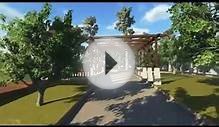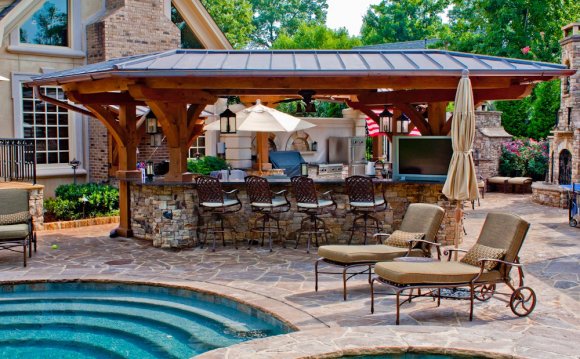
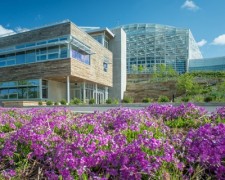 LAF has selected 15 high-performing landscape projects for its 2016 Case Study Investigation (CSI) program. CSI is a unique research collaboration that matches LAF-funded faculty-student research teams with design practitioners to document the benefits of exemplary landscape projects.
LAF has selected 15 high-performing landscape projects for its 2016 Case Study Investigation (CSI) program. CSI is a unique research collaboration that matches LAF-funded faculty-student research teams with design practitioners to document the benefits of exemplary landscape projects.
Participants from each firm will work with the to evaluate the environmental, social, and economic performance of the selected projects. The resulting Case Study Briefs are published to LAF’s award-winning Landscape Performance Series database of over 100 projects.
This year’s cohort comprises a range of project typologies, including three waterfront parks, a stormwater treatment facility, an EPA Region headquarters, a stream restoration, and several landmark urban parks. The 2016 projects will add unrepresented geographies — namely Alabama, Kansas, Missouri, and Canada — to the Landscape Performance Series.
The 2016 CSI program kicks off in February and runs through early August. The resulting Case Study Briefs from these participating firms and projects will be published in the fall:
- Andropogon's Phipps Conservatory
2D Studio
Fairview Environmental Park, Montgomery, AL
- Andropogon
Phipps Conservatory, Pittsburgh, PA
University of Pennsylvania - Shoemaker Green, Philadelphia, PA
- BNIM
EPA Region 7 Headquarters, Lenexa, KS
Swope Campus Parking Lot, Kansas City, MO
- HNP Landscape Architecture
Samford Park at Toomer’s Corner Landscape, Auburn, AL - Janet Rosenberg + Associates' HtO ParkJanet Rosenberg + Associates
HtO Park, Toronto, ON, Canada - Kansas City Water Services Department
Middle Blue River Basin Green Solutions Pilot Project, Kansas City, MO - Mia Lehrer + Associates
Vista Hermosa, Los Angeles, CA
- Michael Van Valkenburgh Associates
Brooklyn Bridge Park, Brooklyn, NY
Corktown Common, Toronto, ON, Canada
- PFS Studio
Sherbourne Common Park, Toronto, ON, CanadaTom Leader Studio's Railroad Park
- Psomas
South Los Angeles Wetland Park, Los Angeles, CA
- SWA Group
Shenzhen Bay, Shenzhen, China - Tom Leader Studio
Railroad Park, Birmingham, AL
 We look forward to working with the firms and learning more about these amazing projects and their impacts!
We look forward to working with the firms and learning more about these amazing projects and their impacts!
Six faculty Research Fellows have been selected for LAF’s 2016 Case Study Investigation (CSI) program. CSI is a unique research collaboration that matches faculty-student research teams with design firms to document the benefits of exemplary high-performing landscape projects. Teams develop methods to quantify environmental, economic and social benefits and produce Case Study Briefs for LAF’s Landscape Performance Series.
Research Fellows lead the CSI collaboration, work with firms to identify measurable impacts of select projects, develop evaluation methods, and oversee the case study production process. These select faculty members receive an honorarium and funding to support a student research assistant.
The following LAF Research Fellows will lead the five 2016 Case Study Investigation teams:
- Charlene LeBleu, FASLA, AICP, Auburn University
- Howard Hahn, RLA, ASLA, Kansas State University
- Nicholas Pevzner, University of Pennsylvania
- Kelly Shannon, PhD, University of Southern California
- Jane Wolff and Elise Shelley, University of Toronto
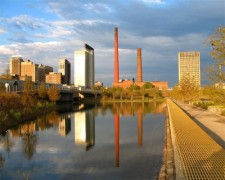 We look forward to working with this distinguished group! The 2016 CSI program gets underway in February and runs through early August. Research teams will document the performance of 15 exemplary projects. Stay tuned — next week, we’ll announce the projects and firms selected for participation.
We look forward to working with this distinguished group! The 2016 CSI program gets underway in February and runs through early August. Research teams will document the performance of 15 exemplary projects. Stay tuned — next week, we’ll announce the projects and firms selected for participation.
The Landscape Architecture Foundation (LAF) wishes you all the best as 2016 gets underway! This year marks LAF’s 50th anniversary, and we look forward to celebrating with you throughout the year. Look for announcements about new transformative programs and initiatives, and save the date for June 10-11 in Philadelphia when we host a landmark summit about landscape architecture and the future!
Thanks to all of our friends and supporters who stopped by our photobooth in Chicago to help us kick off this year of celebration!
Now that I am in my third and final year of the Harvard Graduate School of Design (GSD) Master of Landscape Architecture program, I think back to the query that brought me to the design field: how people manage water, a transboundary resource. In retrospect, this interest has remained constant, although I could not have imagined the various scales and issues I’d study pertaining to water. Through the GSD, I have been fortunate to examine stormwater in Nepal, the role of paths in the context of tsunami evacuation, and now, a thesis around tribal salmon harvest in the Pacific Northwest.
During the summer of 2014, with the support of the South Asia Institute and GSD Community Service Fellowship, I traveled 15 hours by plane and 16 hours by bus to Surkhet, Nepal, a verdant valley overlaid by housing, commerce, and agriculture in the subtropical Terai belt. A friend at Kopila Valley, a school serving 350 students, connected me with the managing non-profit, BlinkNow, which invited me to provide landscape design strategies for a new school complex. I led hands-on workshops so students could learn about landscape architecture and I could learn about their favorite spaces, but I struggled to find the best ways to integrate students’ voices into the project. One clear element was the monsoon season that would soon come, and with it, potential flooding or erosion throughout the school. Part of the design strategy revolved around tackling and revealing these water flows. A week after I returned to the states, a monsoon caused rivers to swell, and massive flooding coupled with landslides left hundreds without homes.
Surkhet, Nepal (Image: Jack Cochran)Given that Nepal is prone to earthquakes and landslides, I was eager to learn more about places that could serve as precedents for responding to natural disasters. With the financial support of the Asia Center and GSD Penny White Fund, my friend, Jessie Booth (MLA ‘16), and I traveled to low-density coastal cities in Japan, Kamaishi and Ishinomaki, both devastated by the 3/11 Tsunami. We sought to understand the role that landscape could play in supporting natural disaster preparedness. Specifically, we wondered how pedestrian evacuation paths could become imprinted in the collective memory to serve residents during emergency and non-emergency times.
Coastal infrastructure in Ishinomaki, Japan

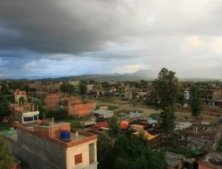
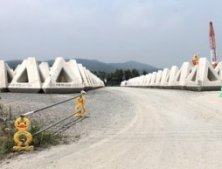
YOU MIGHT ALSO LIKE
